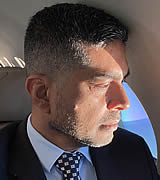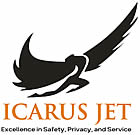 |
Private aviation is at a fork in the road. From the surging private jet market to environmental and economic headwinds, US political leaders - including Presidential candidates Donald Trump and Kamala Harris - will likely have vastly different impacts on this industry.
Here’s a breakdown that we put together alongside Icarus Jet’s in-house market research team of some of the key areas in aviation and how different policies could shape their future.
1. Private jet charter
Private jet charter has experienced serious growth, mainly from post-pandemic demand for flexibility. Deliveries of business jets are forecast to continue higher in the next decade at a steady pace, supported by Honeywell’s latest Global Business Aviation Outlook, with 8,500 new jets potentially coming through at a value of about $280bn. However, the policy set by the new administration might seriously affect the charter market:
-
Trump’s perspective: Conventional wisdom is that Republican administrations have preferred to reduce regulation and decrease federal involvement. Based on his previous tenure, Trump appeared to support private enterprise, which could mean less regulation as it relates to charter safety and maintenance requirements. This would expedite the growth of the market; however, the outcome could be that it actually places the passengers in an unsafe position.
-
Harris’s view: The Democrat Harris, therefore, will likely focus on much more stringent oversight. Passenger safety standards might be imposed, necessitating perhaps much more rigorous checks for charter services. This, in turn, means the operating costs would rise and make for a better-quality standard for those operators interested in offering higher standards.
2. Insurance market
The insurance market for business aviation has to operate amidst geopolitical instability, economic fluctuation, and increased public scrutiny. The policy framework will determine the way risk is managed:
-
Under Trump, the insurance premiums may stabilize or go down because a Republican-led administration may lessen the regulations, making the environment more supportive and available for insurance to take risks. Deregulation, however, would result in increased exposure to risks if operational standards are slackened.
-
With Harris, where more environmental standard applications and more rigid regulations tend to be put in place, insurance premiums could increase because of the higher cost of compliance. This may stress the smaller operators but will ensure far better risk mitigation for insurers.

3. Asset depreciation and tax advantages
Among the vital factors that are to be considered, asset depreciation remains important for aviation owners, particularly those in private and corporate aviation. Sometimes, depreciation rules and tax breaks can make or break a purchasing decision because:
-
Trump’s approach: A Trump-led administration would perhaps also continue such generous tax incentives, including 100% bonus depreciation for new and used aircraft purchases. This would increase buying activity, particularly for bigger jets with an extended range.
-
Harris’s focus: A Harris administration might limit or revise depreciation incentives to prioritize environmental and equity considerations. Tax incentives might shift toward encouraging sustainable aviation solutions, for instance, by providing credits for investment in hybrid and electric aircraft. This may realign the market to favor operators that invest in environmentally friendly technology.
4. Environmental impact and regulations
The future of aviation is at the forefront of environmental concerns, with both candidates likely to take divergent paths in:
-
Under Trump, the acceleration of environmental deregulation is likely to continue. This would provide the opportunity for traditional fuel usage and slower adoption of SAFs, though their presence has already begun to gain momentum. Such a move may improve bottom-line profits in the shorter term and expand the market. However, this will likely increase pressure on international stakeholders on the industry's transition into greener technologies.
-
Harris’s approach: Conventionally, the Democratic camp is known for high and stringent environmental standards. Harris would likely help accelerate SAF adoption by introducing incentives and working on hydrogen and propulsion systems. She could do so by implementing subsidies to those who produce SAF and penalties on emissions, which would expedite greener aviation but at an added cost in the near term. According to Honeywell, SAF can reduce emissions by up to 80% compared to conventional fuels, indicating the clear benefits it has on the environment.
5. Market dynamics: Economic and geopolitical factors
Global economic and geopolitical conditions also contribute to shaping the aviation market. Global economic realities and geopolitical pressures, including inflation and ongoing supply chain constraints, hit the aviation market. Business aviation has bounced back strongly since the pandemic, with deliveries up 16% from 2019 to 2025, according to Honeywell. Both US candidates’ economic policies will have cascading effects:
-
Trump’s economic policies: With much emphasis on deregulation and tax cuts, a Trump presidency may well provide a good platform for high-net-worth individuals and businesses investing in private aviation. This can spur increased demand on the charter side and fractional ownership models to keep the market moving.
-
Harris’s economic outlook: Policies under Harris may be more equitable and sustainable, with higher taxation on items like private jets considered a luxury. While this would dampen the enthusiasm of some sectors, it may be in tune with the broader trend of growing public scrutiny over business aviation’s environmental impact.
6. Future outlook: Business aviation’s green revolution
Business aviation is already on a strong course of greening. Larger jets, designed for longer ranges and improved fuel efficiency, dominate orders. An administration under Harris would likely accelerate the trend by using incentives to encourage sustainable practices. Democrats could use policy levers to ramp up SAF production and impose emissions standards while funding research into next-generation propulsion.
A Trump presidency would likely slow this transition, giving more freedom to manufacturers. This may help the bottom line of legacy systems, but they will increasingly struggle to keep up with international standards that have more rigid sustainability requirements.
Conclusion
The general future of the aviation sector for the next decade will depend significantly on the policies the upcoming administration will implement. Trump’s policy is for fast market growth through deregulation and tax incentives, which drives charter and private ownership expansion. Harris’s approach is likely directed at sustainability, regulation, and environmental protection, which could reshape market dynamics to favor innovation in green aviation.
Whatever the political outcomes might be, the future of the industry will undeniably be one of balance between economic incentives and environmental responsibilities, the continued evolution of aviation toward global expectations of sustainability. How this delicate balance is achieved will surely be one of the important hallmarks of success as manufacturers, operators, and policymakers take to the skies for the predictable future.
About the Author
Pilot, president, and founder of Icarus Jet, a leading global trip support and aircraft management company, Kevin Singh has flown globally as a chief pilot and captain on private jets like the Hawker 800-A and 850 XP, and the Challenger 600 series and Global 6000.





